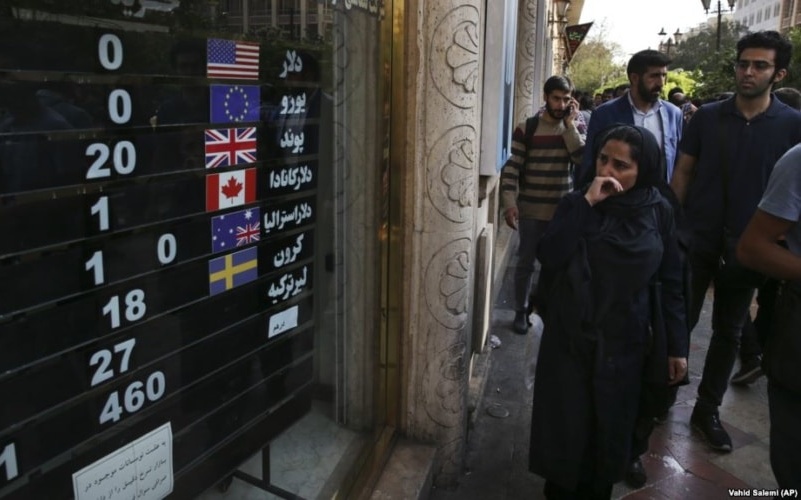Iranians in front of a currency office in Tehran (Vahid Salemi/AP)
Iran’s currency has hit an all-time low, amid confirmation of a 36.5% crop in foreign direct investment last year.
The Iranian rial is trading at 187,800:1 v. the US dollar on the open market on Thursday, having fallen almost 30% in value this spring.
The rial’s previous low was about 180,000:1 in autumn 2018, just before the imposition of comprehensive sanctions by the Trump Administration.
Sustained intervention by the Government and Central Bank brought the rate down to about 114,000:1 last year before it began edging downwards to 150,000:1 at the start of 2020.
Efforts to prop up the currency have been besieged by long-term issues in production and finance, the American sanctions, the impact of Coronavirus, and a loss of up to 95% in oil exports amid low global prices.
The United Nations Conference on Trade and Development reported the 36.5% fall in foreign investment to $1.5 billion, Iran’s lowest figure since 2002.
Investment has sunk from more than $5 billion in 2017 and $2.3 billion in 2018.
Economy Minister Farhad Dezhpasand had claimed in February, “In the first nine months of 2019, foreign investment in Iran showed a 32% increase compared with the same period last year.”
Dezhpasand never provide detailed evidence to support the assertion.
Instead, UNCTAD set Iran’s share of global foreign direct investment at less than 0.1%. Tehran lags far behind the UAE (10x Iran’s FDI), Turkey (5x), Saudi Arabia (3x), and Iraq and Oman (each 2x).
The International Monetary Fund projects that, after a 7.6% decline in 2019, Iran’s GDP will contract another 11% this year amid Coronavirus.
UNCTAD reinforced this with the forecast that global FDI will fall 40% in 2020 and 5-10% in 2021.

